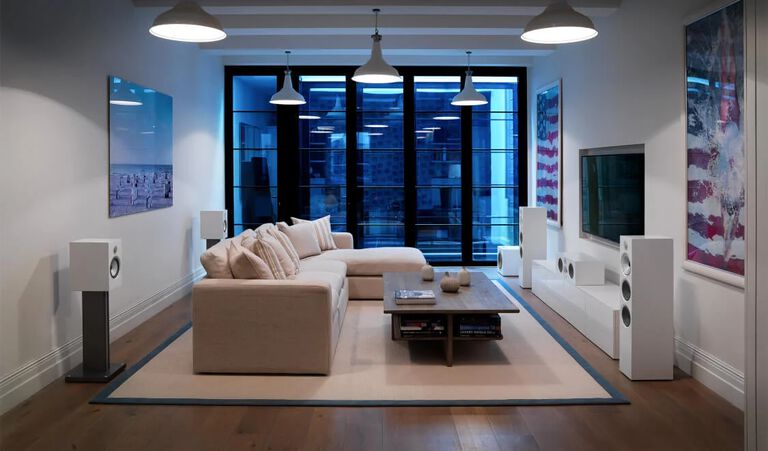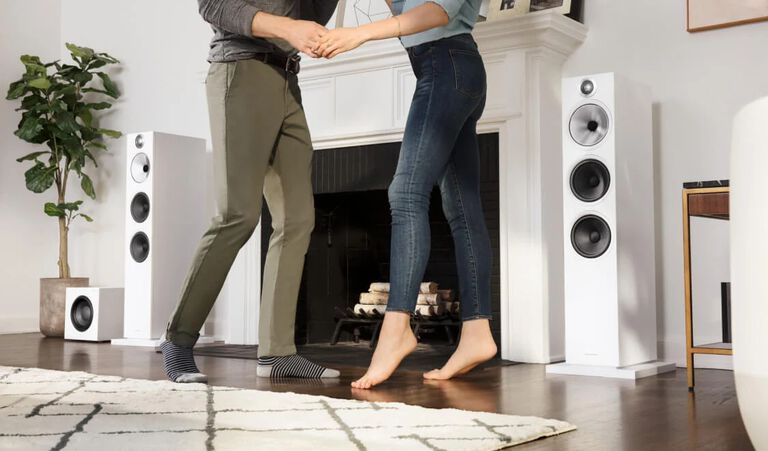Getting great stereo sound at home
If you’re about to buy a new hi-fi or chasing the best possible sound from components you already own, you need to read this. Our expert audio advice tells you everything you’ll need to know.
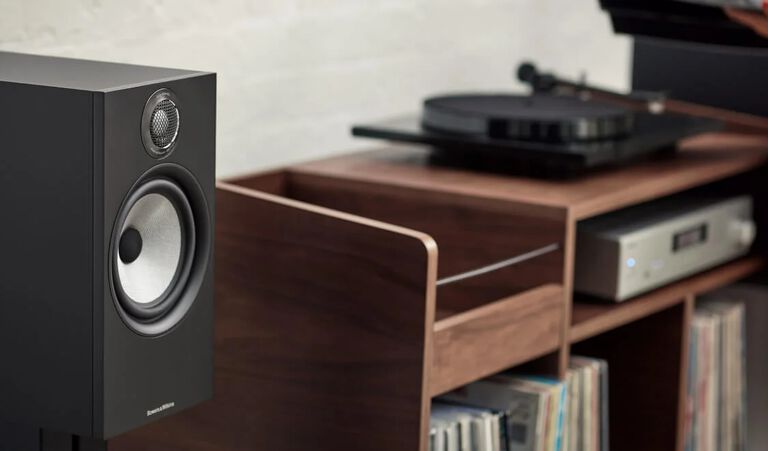
Whether you’re in a concert hall, at home with your hi-fi, listening in the car or on a train with your earphones, music connects with your emotions. Just think for a moment about your favourite music: it’ll be full of songs, pieces and performances that ‘got to you’ in some way or another, whether they recall those special, memorable moments in your life or simply take you back to the first time you heard them.
Great hi-fi is all about making that connection even stronger. Digital or analogue, it really doesn’t matter – what’s important is the way the music moves you, and a great system will do that for you, whatever kind of music you enjoy. Even better, it’s going to bring you even more of those connections, by letting you discover more music you’ll love.
That’s why at Bowers & Wilkins, we’re all about delivering a better listening experience, whatever you choose to play. Simply, we believe that great sound means more enjoyment from your favourite music: it’s all about getting you closer to great sound experiences that really move you, and that’s what we aim to deliver with every product we make. Simply, we want to make your music experience better.
Choosing your ideal hi-fi system
So, how do you build a hi-fi system? Well, setting a budget will be a personal issue, but it’s not the whole story: deciding how, and where, you want to listen is also a major consideration. For example, larger rooms tend to need larger loudspeakers – which, in turn, merit better amplification – to deliver the best sound; however, if your listening space is small, very large speakers are likely to ‘over-drive’ the room, giving an overbearing sound that lacks control.
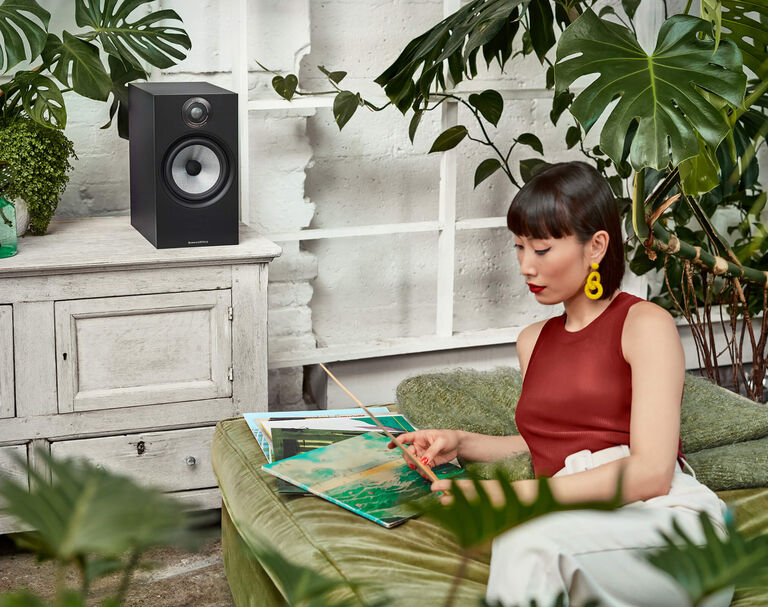
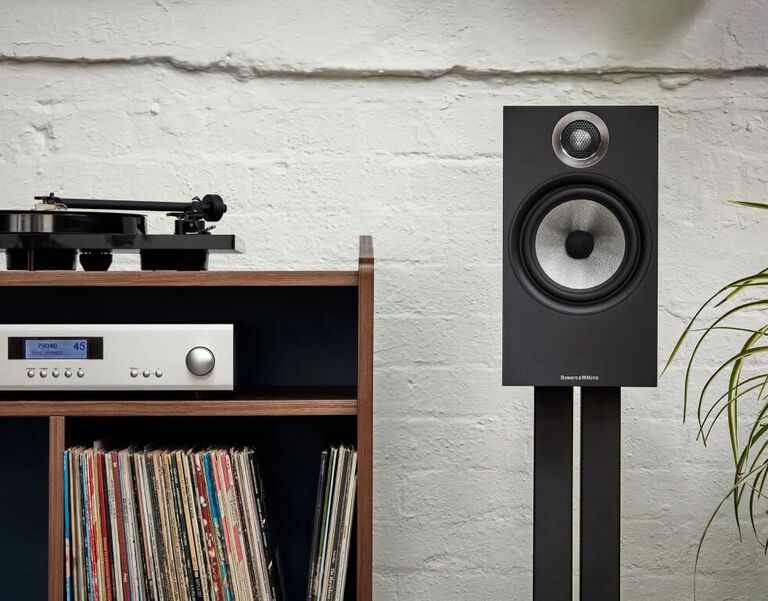
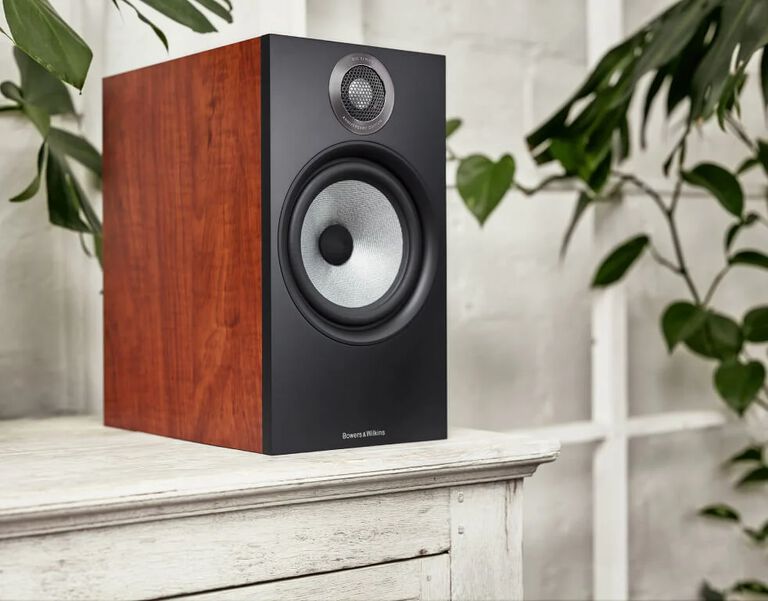
So, as your very first step: be as realistic as possible about your needs, and try to audition speakers – and systems – in rooms as similar as possible to your own living space. Hi-Fi magazines and specialist retailers can help advise you and give you some idea what might suit your requirements, space and budget – but there’s no substitute for listening. What’s more, just as there’s no ‘right’ music to listen to on your hi-fi system, there are no absolutes in the choice of equipment; what sounds best for you is, by definition, your correct choice.
So, what’s next? Well, you’ve thought about your room; now ask yourself how you want to listen – in other words, where you want to get your music. Do you want to play CDs or LPs, or stream everything either from your own network library or online services? It might be tempting to put together a system able to do it all, but if you simplify and rationalise you’ll able to spend more of your available budget on each element, thus ensuring better performance.
Consider investing about a third of your budget on your principal source – whether that’s a CD player, a music streamer or a record player – for the best possible sound. Aim to buy the best source component you can afford: the old computer programming maxim ‘garbage in, garbage out’ applies here, as sound quality lost at the source of your music can’t be recovered further down the hi-fi chain.
The beauty of building a system from separate components, rather than buying a somewhat more compromised all-in-one box, is that you can always add further music sources at a later date, as your needs (or the technology) changes.
Making that flexibility possible is the next key element in your system: amplification, on which you should again budget about a third of your total. It’s not just the driving force for your system, but also its control centre, so it’s worth considering whether the amplifier you choose has sufficient inputs to accommodate your present – and future – needs. It’s a bit like ensuring the computer you buy has enough ports to connect all the peripherals you might want to use with it.
The cartoon image of ‘real hi-fi’ involves huge speakers driven by the kind of amplifier that dims all the lights in your neighbourhood when you switch it on – the Spinal Tap ‘Goes up to 11’ syndrome. However, while listening at high volumes in a large room, possibly via some of our larger floor-standing speakers, will require an amplifier with ample reserves, power is one of the most commonly misunderstood measures of quality in hi-fi. While important, watts alone do not dictate performance.
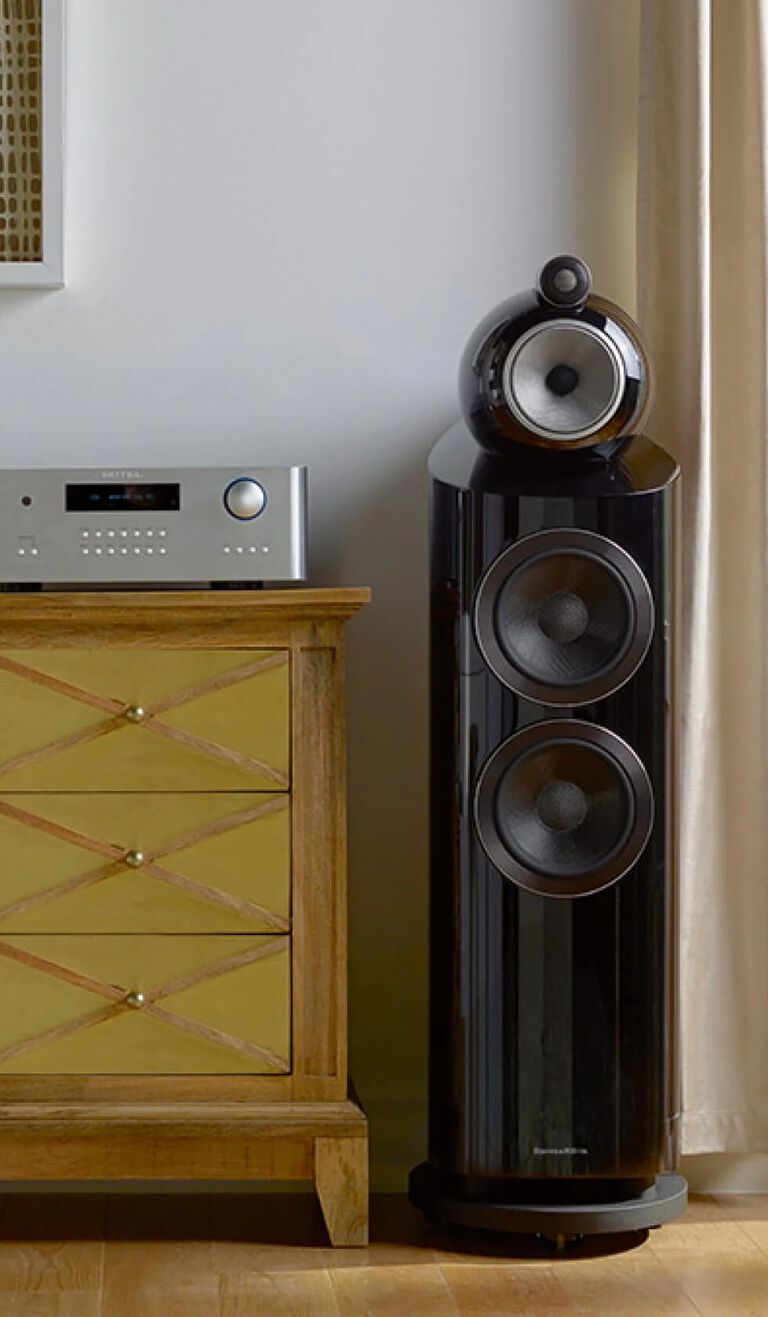
800 Series Diamond
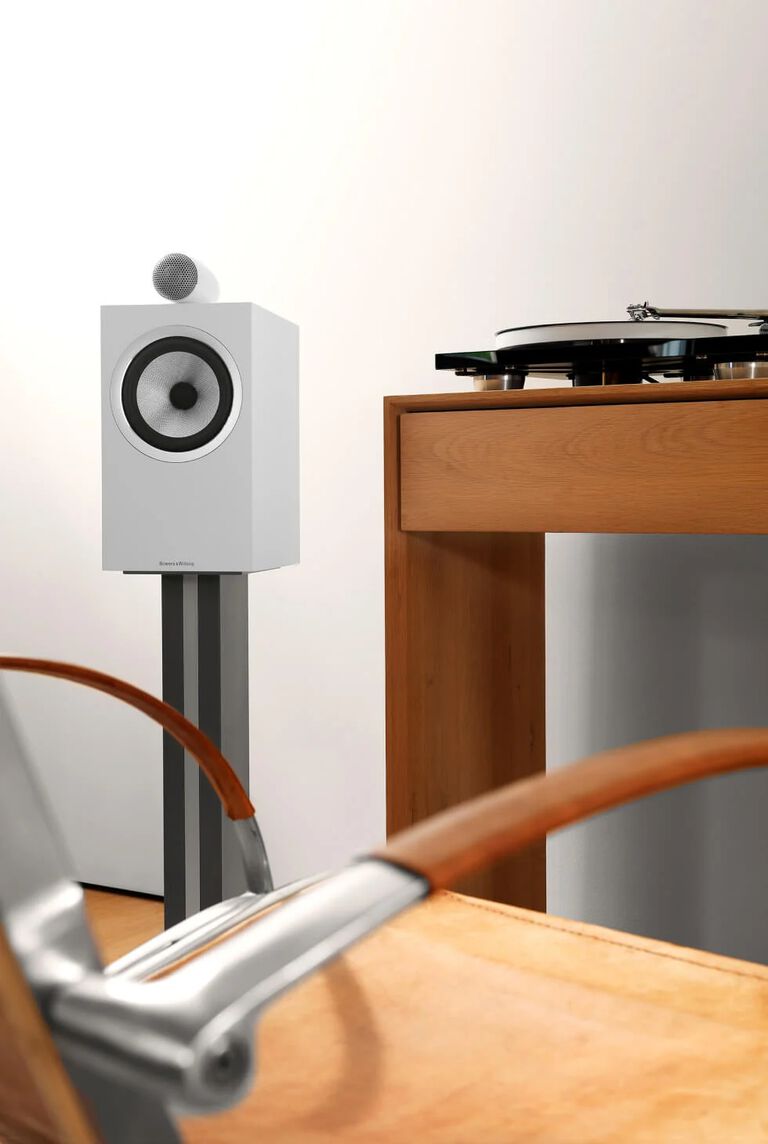
705 S2
Many of the finest budget hi-fi amplifiers on the market have a ‘mere’ 40 watts of output per channel – yet are easily capable of very substantial volume levels with most of our more affordable speakers. If, however, you want to use some of our larger designs, such as the acclaimed 800 Series Diamond, you’ll have to plan for better quality – and that almost inevitably means more expensive – amplification more suited to the task.
After all, an amplifier working well within its capabilities is always going to sound better than one struggling to drive a pair of speakers to the levels you require.
That brings us back to loudspeakers, and the last third of your budget. You’ve more choice over design in this category than in any other, with loudspeakers available in a range of cabinet sizes, and aesthetics from conventional to radically modern. In general, larger speakers produce a bigger, deeper sound than their smaller siblings – not least because their larger drive units (or more of them) are better able to ‘shift air’, which after all is how sound is delivered.
However, if you opt for high-performance compact designs like our 705 S2 stand-mounts, that delineation is less clear-cut: speakers of this quality can produce bass levels the equal of many larger, lesser alternatives, making them an ideal option for rooms where space is at a premium. True, stand-mount speakers will only perform at their best when mounted on dedicated loudspeaker stands, which are an additional cost over and above the price of the speakers themselves, so this should be factored into your budget if necessary. We offer suitable stands designed to optimise the performance of our stand-mount products, but other solutions are also available if you prefer.
How do I decide what’s right for me?
With your budget decided and your key building blocks planned out, the next step is to book a series of demonstrations with a specialist hi-fi dealer. Judging a product on its brand name or on the quality of your dealer’s demonstration – or even on its critical reviews – can be a useful way to narrow down your options, but only you can decide whether the equipment really suits your needs, after listening with your favourite music.
Personal preferences play a huge part in the listening experience, but hi-fi components also interact with each other in a remarkably ‘organic’ way. Combine three well-reviewed components to create a system, and you could well find the results disappointing rather than scintillating. Ancillary components such as cables, supports and stands can make a difference in this regard, but it’s the intrinsic sonic properties of each core component that have the biggest impact. This is where an experienced dealer can most help.
The best way to judge a system is to hear it set up correctly in a dedicated listening environment, but be mindful of the size of your own listening space and – at the risk of overstressing this – insist on being able to listen using your music at whatever volume you prefer. Remember, great hi-fi is tailor-made, not off-the-peg – and the best system for you will make your music sound great, not limit your listening to what are sometimes viewed as ‘audiophile’ recordings.
Where to place your speakers
We’ve already mentioned that a room’s size can have a fundamental impact on the size and type of loudspeaker you should buy – now let’s explain why.
The moving components in a loudspeaker are called drive units, because they work to vibrate – or ‘drive’ – the air in your room. The bigger the loudspeaker and the bigger its drive units – or the more drive units it employs, in some cases – then the more air it can move. This is relevant because the larger your room, the more air your speakers will be asked to move, and as a result, the harder they’ll have to work. To use the most extreme example, the tiny drive units fitted to most desktop speaker systems would sound ‘lost’ in a large concert hall. By the same token, a massive pair of floorstanders will excite too much air in a small space, sounding both sonically and – to a surprisingly real extent – physically intimidating.
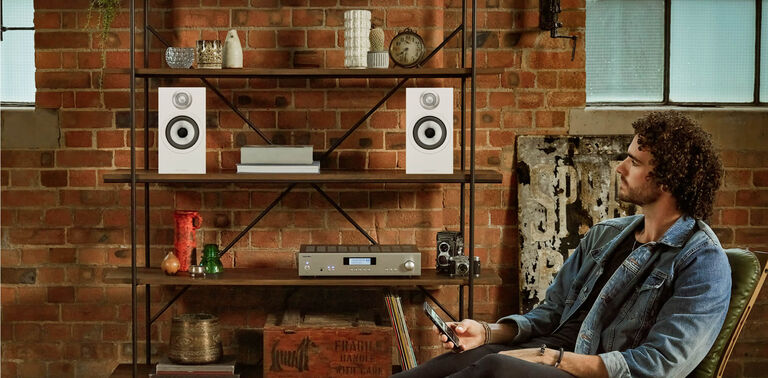
For that reason, choosing speakers of an appropriate size to fit your available space is a significant step towards better hi-fi. That means being realistic not only about the room you have available, but also about where you can actually position your speakers within that space. If you have to place your speakers close to a wall, or a corner, you might find your buying choices are rather limited.
Why? Simply, because every loudspeaker will interact with its physical environment, and especially with nearby boundaries – chiefly, walls. Place your speakers close up to a back wall, and in almost all cases you’ll find the level of bass increases, but this can be at the expense of openness, stereo imaging and speed. Bigger speakers will simply exacerbate this effect, sounding bigger and more bass-heavy than ever. Conversely, place small speakers too far out into the room, and they can sound lost – again, because they’re being asked to drive too much air (and may have been designed to rely on that so-called ‘boundary reinforcement’ from the walls as part of their bass tuning).
For that reason, it’s vital you plan where you propose to put your speakers before you buy: the precise science of positioning can vary, often being influenced by cabinet design, but most manufacturers and dealers will be able to give you guidelines. One rule almost everyone will agree on is that placing speakers in corners – or even close to, and equidistant from, side and rear walls – is a definite no-no: the horn effect this creates will causing significant amounts of ‘boom’, this becoming the dominant element of the sound.
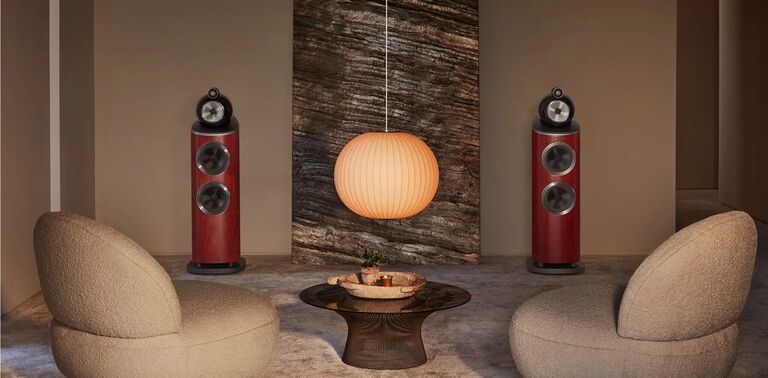
The acoustics of your room can also influence sound in other ways: speakers on a hard, polished floor will take on a significantly different character to the results you’d get from a warmer, softer, carpeted room. The cause is sonic reflections: a minimalist modern room is more acoustically ‘live’ than one awash with soft furnishings and the like.
Want to hear this in action? Go into an empty, unfurnished room, and clap your hands: you’ll hear an instant echo or – if you’re very unlucky, a kind of ‘boing’ tone to the reverberation. We know of one hi-fi reviewer who greatly amused estate agents by going into the rooms of properties he was considering buying and doing this clap test, but consider it in a different way: if you ever go to a social gathering held in a sparsely furnished room, you’re likely to find conversations much harder to follow than in one with lots of soft furnishings
It’s immensely difficult for your dealer to compensate for this effect in a typical demonstration area, but it’s worth mentioning the particular properties of your living room – he or she may be able to recommend equipment able to compensate for your acoustics.
How do I fine-tune my speakers’ positioning?
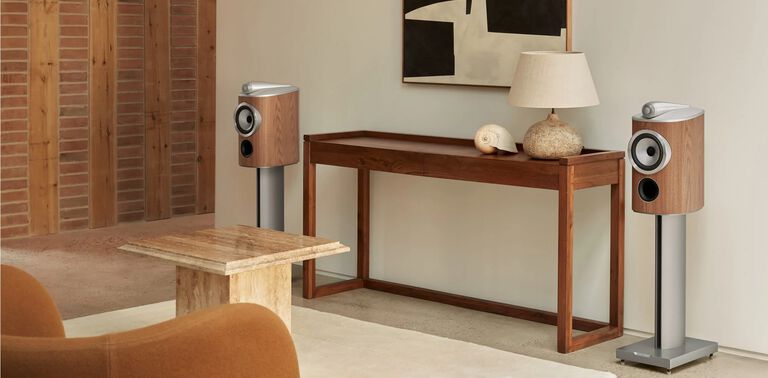
For optimum stereo imaging – that sense of the sound existing in three dimensions – you should place your speakers equidistant from your listening position, at the same relative height (using stands, if appropriate), and slightly angled inwards, or ‘toed-in’, towards your listening position. Imagine an equilateral triangle, with the top point of the triangle being your listening position, and the flat base representing the plane occupied by the speakers: simply angle each speaker in so that it follows the triangle back towards its apex, at your seat. Alternatively, you can use a tape measure (and a friend) to achieve the same result: use the measure as a ‘sight-line’, and have your friend angle in each speaker until you’re looking directly at its drive units.
This effort will generate a superior sonic ‘soundstage’, where the speakers all-but-disappear from the room. Instead, the sound should appear to be hanging in space between your speakers, as if it were being generated by a third, invisible speaker: after all, ‘stereo’ comes from the Greek for ‘solid’, not ‘two channels’!
This goal of stereo imaging is a true soundstage with both depth (reaching away beyond your speakers to your wall) and height (up towards your ceiling), giving you the sonic scale to cope with anything from the most intimate of acoustic tracks to a full orchestral work.
What cables should you buy?
Whichever system you buy, at whatever price point, the appropriate cables will help it to perform at its best. There’s no black magic or ‘weird science’ to this phenomenon, by the way – despite whatever you might read to the contrary. Better-quality audio cables are simply about letting through more of the musical signal – in other words, the best cables are actually the least bad ones!
How much should you spend on cables? Most specialist magazines advocate spending a total of 10% of your system budget on cabling as a good starting point, covering both the cabling to link your amplifier to your speakers and interconnects from your source component (or components) to your amp. Choosing interconnects is relatively straightforward – the shortest possible length will give optimum results – although some electronics manufacturers recommend specific brands as they believe they give better results with their kit, so it can pay to do your homework.
Speaker cabling should be of equal length wherever possible, since this ensures an even ‘load’ is presented to the amplifier. Again you should aim for the shortest possible runs, taking the most direct path possible from amplifier to speakers, and avoiding any kinks, coils or other undesirable twisting in the cable itself.
Sometimes you can find speaker cables introducing a specific tonal character to a system, which can help you fine-tune the balance of your hi-fi. Cables with a high silver content, for example, tend to foster a tonally sweet sound, while substantial solid-core cables often engender a more powerful presentation. The best option is to ask to audition some suitable cables with your proposed hi-fi system, and judge the effects (or lack of them!) for yourself.
Can I get better results with a little more outlay?
One useful and comparatively inexpensive upgrade path to consider is biwiring: in some speakers, the input terminals for the low-frequency (bass) driver and the high-frequency (treble) tweeter are separated out, being linked only by short metal plates that can be easily removed. Within the speaker, the crossover – the circuitry dividing the incoming signal between the drive units – is similarly split and, by using twin runs of speaker cable from amplifier to speaker, it’s possible to address each section of the crossover independently.
Typically, this approach uses cables that have been ‘commoned’ together at the amplifier end, to simplify wiring, although some hi-fi amps now provide for independent output connectors, one pair for treble, the other for bass, to simplify wiring. This will mean you have a total of four sets of speaker cables running from your amp to your speakers.
Biwiring doesn’t influence volume, bass depth or even midrange punch: typically, it improves stereo imaging and focus, detail retrieval, and timing, although the effects aren’t always uniform, and indeed some will claim they’re not even there. Some speakers are designed specifically to do without biwire speaker terminals – our AM-1 Architectural Monitors, for example – and are none the worse for it.
However, one useful additional feature of biwirable speaker terminals is that they allow biamplification. This audio upgrade allows the user to employ two amplifiers – either two power amplifiers, or an integrated (one-box) hi-fi amp, teamed with a partnering power amp – to drive loudspeakers more effectively. The cable requirements are the same: the only change is that each set of drive units in the speaker is now being fed by its own, dedicated channel of power amplification. This will greatly increase the dynamics of your system, especially if you own larger, harder-to-drive loudspeakers.
Whichever cabling configuration you choose, it’s worth getting your speaker cables properly terminated, which is best done by your supplying dealer. Quality terminations ensure your cable retains its performance over time, by ensuring the delicate inner conductors of the wire are kept free from any oxidisation possible when they are in contact with the air, and any pollutants it may carry.
Incidentally, that’s why you’ll find many hi-fi cables have connectors plated with gold, silver, rhodium or other materials – there’s no magic here, but rather just a coating that’s less reactive than the internal conductors of the cable.
So, the simple version…
There’s no mystery or dark art in choosing a hi-fi system: think about what you want to want to spend, how you want to play your music and where, then simply choose the system you like the best. Music is all about emotional connection, and the system able to make your spine tingle is absolutely the best one for your needs.
